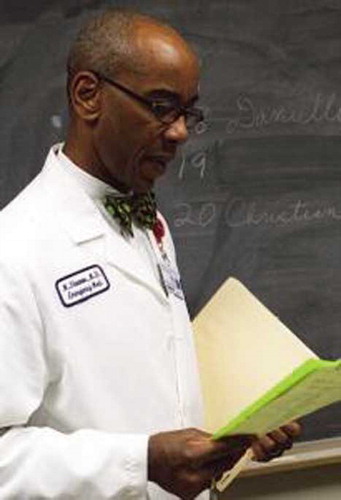 As virtuous men pass mildly away, and whisper to their souls to go, whilst some of their sad friends do say, the breath goes now, and some say no.
As virtuous men pass mildly away, and whisper to their souls to go, whilst some of their sad friends do say, the breath goes now, and some say no.
—John Donne
Michael Shannon was my mentor, friend, and colleague for more than 25 years, and his untimely death in March was a devastating shock. I, along with so many others, will greatly miss his sense of humor, his laser intensity and brilliance, his gentleness, his caring, and his enthusiasm and spirit.
Michael received his medical degree from Duke University School of Medicine and did his pediatrics residency at Boston Medical Center (then known as Boston City Hospital) where he was also chief resident. He began a medical toxicology fellowship at Children's Hospital, Boston, in 1983, and we worked together in the poison control center there under the wonderful tutelage of Dr. Fred Lovejoy. Dr. Shannon's talent and outstanding commitment to pediatrics, pediatric emergency medicine, and toxicology were soon apparent to me. It was a very productive time for us in toxicological research pursuits, and Michael made extraordinary contributions to the field by investigating different aspects of the toxicity of such drugs as cocaine, theophylline, and tricyclic antidepressants. He had boundless interests and indefatigable energy. At one time, he was taking night call for the poison control center, participating in daily toxicology case rounds and ward consultations, collecting clinical research data, serving as attending physician in the emergency department, treating children suffering from plumbism with Dr. John Graef in the children's outpatient lead and toxicology clinic, and, for a considerable time, keeping up a continuity clinic to do some well child care by following a panel of families with young children in the Hospital's primary care center. I remember wondering if we were seeing clones of Michael instead of one person. Amazing!
His clinical and scientific excellence in all things he pursued was extraordinary; he stayed on as faculty jointly at the Hospital and Harvard Medical School and achieved quadruple board certification in medical toxicology, emergency medicine, pediatrics, and pediatric emergency medicine. He rose to become, at various times, chief of the Division of Emergency Medicine, chief of the Division of Clinical Pharmacology, director of the Center for Biopreparedness, and associate chief of the Pediatric Environmental Health Center, all at Children's Hospital, and he was named the first African-American full professor of pediatrics at Harvard Medical School. Michael recognized the potential of talented students and house-staff physicians. Michael had a “presence” during case rounds. A twinkle in his eye coupled with a very gentle challenge to a trainee's confused (or just “conventional”) thought would provoke a scholarly exchange that was such great fun. He diligently raised in his lifetime a new generation of astute clinicians, medical toxicologists, and pediatric practitioners through his close nurturance, guidance, and promotion of their nascent careers. His spirit will most certainly live on in their successes and achievements.
Dr. Shannon achieved international prominence in the fields of pediatric emergency medicine and medical toxicology. He authored and served as chief editor for one of the most influential textbooks in our field. He was an active member of the American Academy of Clinical Toxicology (AACT), where he achieved Fellow status, advised its professional journal, and was a regular contributor to its educational offerings. He led the American College of Medical Toxicology as its president during a time of its rapid growth and development. He was a close advisor to the American Association of Poison Control Centers and a friend of poison control centers everywhere.
Michael was particularly concerned about children's health, and how it was impacted by their home and school environments. Together with Dr. Rose Goldman, we began the first Pediatric Environmental Health Specialty Unit (PEHSU) in the United States to be recognized and funded by the Association of Occupational and Environmental Clinics (AOEC) and the Federal agencies: Environmental Protection Agency and the Agency for Toxic Substances & Disease Registry. It was Michael who suggested that the AOEC include pediatric clinics among its members. Michael was deeply committed to the promise of the National Children's Study (NCS), and we had just recently embarked on an NCS data-collecting collaboration with the Harvard School of Public Health and Brown University. He was active in the nation's most prominent advocacy group for children: the American Academy of Pediatrics. He became chair of its influential Committee on Environmental Health (COEH), and during his tenure, the COEH issued many important white papers and policy statements regarding environmental hazards to children. Such guidance is regularly accessed by health professionals everywhere, and it contributes to making the world a safer place for children.
Michael touched many lives, both professionally and personally. He was the consummate clinician, researcher, teacher, and physician-leader, an innovator who was an inspiration and role model to us all. I will greatly miss his smile, his passion for toxicology, and his voice for children.
